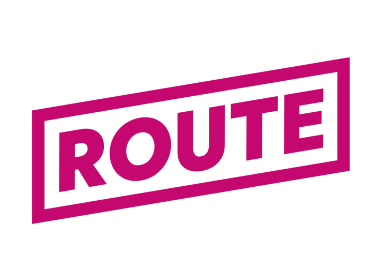At the start of 2023 there were an estimated 5.6 million small businesses trading in the UK, with many of these considered to be startup ventures that employ fewer than 50 people.
This number accounts for 99.9% of all businesses currently in operation, while employing an estimated 16.7 million (61% of the total private sector workforce) and producing a cumulative turnover of £2.4 trillion (53%).
If you are launching a new business within this space, however, the question that remains is how should you advertise your venture?
Here’s a detailed guide to help you on your way:
Get started by promoting your business on Google
When looking to promote your business, your first port of call should be to market the brand through Google.
There are numerous reasons for this too; with Google controlling a little more than 92% of the total search engine market share worldwide.
When you also consider that SEOTribunal estimated that there are approximately 3.8 million Google searches executed every minute, you’ll understand the importance of boosting your brand’s visibility online and through the world’s most dominant search engine.
But what are the best ways of promoting your venture through Google?
Here are some ideas to keep in mind:
Create and verify your Google Business Profile
Google enables you to create your own Business Profile, which is equivalent to an official Google listing that enables your company’s details to show up in local search engine results and associated maps.
With this type of listing, when someone types in your business name and location, your details will also be displayed on the right-side ‘Knowledge Panel’ in the search engine results.
This is particularly valuable in the current climate, as Google’s increasingly efficient and tailored SERPs (Search Engine Results Page) ensure that interested customers can be connected to your business in real-time.
When creating your Google Business Profile, the key is to verify ownership of your listing through your free account.
Once you’ve completed this step, you can optimise your listing to ensure that it appears as high as possible in Google’s SERPs in relation to targeted keywords.
Build an optimised website
On a similar note, ecommerce has also emerged as a relentless and rapidly growing market in the digital age.
As a result of this, it’s also crucial that you create a navigable and optimised website that can rank well on the back of Google’s algorithms.
Make no mistake; this will serve as the digital storefront for your business, creating a visible and relevant beacon for potential customers and establishing a focal point for the online consumer journey.
This is one of the best and most effective ways of promoting your new business on Google, particularly when you consider the amount of information that it can relay.
From your brand narrative and identity to core product ranges and unique selling points, a well-designed website is a promotional tool like no other.
We’d recommend liaising with specialist design firms when creating your website, even though free templates and solutions exist in the current marketplace.
This guarantees the highest quality and most efficient website design, while it may even enable you to partner with firms that provide associated PPC and SEO services.
Utilise Google Ads and customer reviews
With a prominent website and strong local SEO presence, you can successfully build brand awareness online and build an entire audience based on targeted and carefully selected keyword phrases.
While these methods enable you to gain exposure and build awareness over time, however, there are other techniques aimed at providing more immediate attention.
For example, you could utilise Google Ads to create a paid listing that appears at the top of SERPs ahead of organic results, once again in connection with targeted and high-volume keywords.
This applies to both national and local listings too, creating better value for your marketing spend and boosting exposure across the board.
Of course, you’ll need the requisite marketing budget in the first place to secure Google Ads and implement your strategy, but Google’s market share, flexibility and unique ad-building features make this a more than viable investment for brands.
With any online listing that’s discoverable via Google (paid or otherwise), it’s to optimise these as much as possible.
For basic business listings, for example, you should look to incorporate images of your business alongside authentic and high-quality reviews.
These should relay first-hand experiences of various customers, providing a unique insight into your business and products or services that you sell.
Embrace OOH and DOOH
If you really want to advertise your small business effectively, there’s no doubt that OOH (and DOOH) should play a pivotal role within your integrated marketing campaigns.
There’s certainly an affinity between OOH ad channels and small business growth, as marketers can successfully utilise high footfall locations to target customers within a predetermined catchment area.
Similarly, channels such as traditional billboards offer optimal exposure for brands within strategically located regions, while melding into their surrounding environment to drive marketing that’s non-intrusive and highly engaging.
Interestingly, there’s a strange misconception that OOH and DOOH advertising is too expensive for small and local businesses.
While the cost of standard two-week bookings for digital screens can be a little expensive in prime locations, traditional billboards are actually relatively affordable when compared to other offline channels like TV and print media.
Billboards are also known to trigger more online activations in relation to their total spend, making them one of the most cost-effective channels overall.
You should also note that the cost of billboards can be reduced over the course of longer bookings, which is ideal when looking to build brand awareness as a new venture.
By utilising paper-based OOH channels, you can also reduce your overall marketing spend and the total cost of running a billboard campaign, especially over the course of a long-term booking.
This affords you more capital to invest in other paid advertising channels as part of your integrated campaign, which may make all the difference in a truly competitive marketplace.
Execution is everything when creating an OOH campaign, however, so here are some tips to help you on your way:
Make creativity a key watchword
Saving money through the procurement of traditional billboards (which also optimises your exposure in a particular location as you won’t be required to share space with additional ads), also frees up capital to invest in the design of your content.
Make no mistake; creative themes and designs immediately enhance the visual impact of your ads, capturing a higher number of impressions and potentially improving conversion rates through various online channels.
Billboards also enable you to introduce textures and lighting into your content, in order to create more immersive ads that actively boost engagement by encouraging real-time interaction.
Just remember, your creative designs should still be underpinned by the visual “rule of three”, which helps to segregate the space on your advertising real estate and makes room for crucial design elements such as a headline and visible CTA.
We’d also recommend striving to strike the delicate balance between simplicity and creativity, so that your sponsored messaging and content isn’t lost amid a blur of colours and excitement.
Learn how to write a headline
We’ve already touched on your ad’s headline or slogan, which must be concise, punchy and printed in a font that’s legible and easy to read at a distance.
Typically, you’ll only have room for a single headline or primary messaging, even when utilizing 48 and 96-sheet billboards.
What’s more, just six seconds is touted as the industry average for reading a billboard in real-time, so it’s important to be incredibly concise and have a clear understanding of the message that you’re attempting to convey – making it key that you write your headline effectively.
Understand the link between OOH and Instagram
We spoke briefly about Instagram earlier, with this platform considered to be one of the fastest-growing entities of its type and home to more than 1.386 billion unique and active users.
Interestingly, recent research carried out by Neilsen found that OOH drove higher levels of engagement and activations through Instagram, especially when compared with other offline channels like radio, television and print media.
Overall, the study showed that OOH delivers four times more online activity per dollar spent than TV, radio and print, with this trend particularly evident across both Instagram and Twitter.
This creates a clear opportunity when designing your OOH ads, as you can structure your content and campaigns to incorporate your business’s Twitter and Instagram handles as a way of driving further interaction online.
This trend is further optimised by the fact that people who see OOH campaigns are 17% more likely to engage with a brand through their smartphone, with most individuals also having direct access to their social media accounts on their mobiles.
Promoting your content on social media
Social media should always play a key role in advertising and promoting your new business, especially when you’re looking to reach as large an audience as possible and build awareness on a relatively minimal spend.
However, there are several considerations when formulating a social media marketing strategy, and we’ve outlined some of these in further detail below:
Don’t forget about Facebook
Not all social channels have been created equal, and you’ll need to tailor your marketing strategy based on the preferences and behaviours of your consumers (we’ll touch on this a little more in the next section).
However, there are some social media sites that are more universally popular than others, with Facebook offering a relevant case in point.
Facebook remains the largest single social network available online, with an estimated 2.89 billion monthly active users as of Q2 2021.
The number of active Facebook users first surpassed one billion in Q3 2012, and it has remained the dominant social media site ever since.
How you utilise Facebook will depend largely on your industry and core objectives, but in general terms, you should start by creating a dedicated business page that features all relevant contact information and an accessible call-to-action (CTA).
This should serve as a central hub from which you actively look to engage customers over time, whether you’re focused on promoting events or hosting Facebook live sessions that impart valuable information and help to build trust amongst your followers.
Regardless of how you look to use Facebook, the key is that you place the site at the centre of your social media marketing strategy.
Define your target market
While Facebook should be a staple of your social media strategy, we’d also recommend that you further define your target market and utilise other sites that enable you to engage your customers in real-time.
There are some general rules to consider here, with younger consumers typically favouring relatively new social platforms such as TikTok, Instagram and Snapchat.
Conversely, older and more professional demographics tend to remain more heavily active on Facebook and LinkedIn, alongside more conversational sites such as Twitter.
In terms of more specific rules, you should note that platforms like Pinterest are dominated by female users.
In fact, women account for 71.1% of Pinterest’s total user base, so product-oriented brands that sell primarily to women should make use of this platform.
Ultimately, the key is to understand your target market and create clearly defined consumer profiles as part of your social media campaign, before targeting relevant sites and tailoring your content accordingly.
There are no right or wrong answers here, but creating efficient campaigns that utilise channels correctly and afford you as much exposure to your target customers as possible.
Create video content on YouTube and TikTok (where applicable)
Video content represents an excellent way of engaging customers, with this observation borne out by various studies and research findings.
These have discovered that video content tends to get 1,200% more shares than text and imagery combined on average, with this largely due to the fact the human brain can process visuals much quicker than text.
Not only this, but around 90% of the total information transmitted to your brain is visual, so this type of content is more likely to engage us (particularly in a crowded and saturated online space).
With this in mind, advertising on YouTube could prove highly generative for your new business, with organic content such as instructional videos pertaining to specific products likely to drive high levels of engagement in a relatively short period of time.
You can also promote your YouTube channel through a commercial blog, which links back to specific and relevant videos or embeds content directly in a particular post.
This is incredibly effective from an SEO perspective, so it’s worth building out these types of links over time.
YouTube can also be used to host paid advertisements from your business, particularly if you can target content in relevant categories and create punchy advertisements that are capable of reaching your target market.
You can also develop text ads that appear in the search results, and this can represent a viable investment if you’re able to land spots on popular and widely shared videos.
If you want to target younger consumers (such as Gen Z members or younger Millennials), you may also want to create video content for TikTok.
TikTok is certainly a fast-growing platform amongst younger users, with the site continuing to add more than 20 million unique users per month through 2021.
In terms of content type, you’d be best served by creating fun and creative promotional ads for TikTok, rather than focusing on staid or overly promotional content.
Run webinars
Webinar marketing may not be as popular or widely-used as other iterations of the art, but there’s no doubt that it has gained immense popularity and credibility throughout the digital age.
Put simply, a webinar is an online seminar that allows marketers, salespeople and educators to interact with potential leads in real-time, while offering value through the impairment of knowledge pertaining to a particular subject.
Through webinar marketing, you can undoubtedly create a sense of authority and prominence in your chosen marketplace, while they also provide an interactive vehicle through which to promote your brand, product or a particular service.
Typically, you can use webinars to convert targeted leads, while also building brand awareness and capturing brand new audiences.
Of course, your primary objective will impact on the nature and content of your webinar, so it’s important to comprehend your goals before developing a more concrete plan of action.
Even on a fundamental level, product-oriented firms can leverage webinars to demonstrate products practically, creating a comprehensive and versatile marketing channel that’s relatively accessible to small businesses.
Create infographics to build brand awareness
Have you ever wondered why billboards and similar ad channels rely so heavily on images and graphics (which may comprise two-thirds of a display)?
The answer is that the human brain tends to process images up to 60,000-times faster than text, while as much as 93% of all human communication is visual in its nature.
This rule can also be applied to various iterations of online marketing, with the use of images, graphics and video content crucial to the process of successfully engaging customers in the crowded digital space.
For example, when creating content for your small business blog, you’d be wise to make effective use of infographics.
These handy and interactive elements help marketers to present information and data in digestible chunks, while also breaking the flow of continual text and creating a more engaging blog post in the process.
This is particularly handy when sharing lengthy or complex information with your prospective customers, especially if you want to optimise engagement levels and drive superior recall value over a much longer period of time.
The use of infographics represents one of the best and simplest ways to build brand awareness as part of your online marketing campaign, without increasing your overall ad spend.
Make use of customer referral programs
On the topic of cost-effective and impactful advertising techniques, customer referral programs are highly valuable to small businesses in the UK.
This is borne out by the statistics too; with customers acquired through referrals thought to have a 37% higher retention rate overall.
Similarly, 81% of such customers are more likely to engage with brands that feature even rudimentary reward programs, so it’s important to integrate this model into your operation.
There are two main benefits to running a customer referral program as a small business.
Firstly, it incentivises customers to initially engage with your brand and spend their hard-earned cash, as this can earn them rewards so long as they’re willing to recommend the business within their social network.
The same incentive then exists for their friends and loved ones who subsequently commit to a paid subscription or purchase, of course, creating an optimal conversion rate over time and helping to build awareness effectively within a short space of time.
In terms of execution, it’s important to maintain a relatively simple referral model and identify the most tangible rewards, in order to optimise participation rates in the scheme and provide an adequate incentive for customers.
Use email data to engage your customers online
There’s a growing issue with online advertising in the digital age, especially when targeting young consumers such as Millennials and the members of Gen Z.
Amid the ongoing saturation of digital advertisements, Millennials have turned to ad-blockers as a way of streamlining their experience when browsing online.
Downloads of such programs were highest among consumers aged between 18 and 24 (34%), with this figure considerably higher than an average of 15% across the UK.
Some 19% of those aged between 25 and 34 are choosing to do the same, meaning that small businesses need to be increasingly selective when looking to target customers online.
One of the most viable methods of online advertising remains email marketing, with some 85% of Brits having sent or received messages through this medium in 2020.
A further 99% of this number check their inbox every day, while the associated ROI for email marketing is a whopping £42 for every £1 spent.
What’s more, 91% of advertisers rate email marketing as the single most important channel in the modern age, and one that’s increasingly accessible to small businesses across the board.
Remember, brands are now able to collate significant amounts of customer data, including their name and email address.
This provides a seamless way to create tailored and personalised content that’s delivered by email in real-time and likely to trigger incredibly high levels of engagement.
Most importantly, email remains relatively non-intrusive in the eyes of Millennials and other consumer demographics, so you can leverage this channel to successfully reach and engage younger consumers within your audience.
Claim your directory listings
As an entrepreneur, you may be aware of directory listings, which help to create a digital presence for your business and ensures that search engines have detailed information about the venture.
Despite this, however, a surprising number of businesses fail to claim their listings or update them with the most current and accurate information, creating a digital hole into which your venture can sink without further attention.
In many ways, claiming and regularly updating your business listings makes it considerably harder for customers and search engines to locate and display your information respectively, while also reducing the number of citations connected to your brand.
Citations refer to mentions of your company’s name, address and phone number on a website, even in instances where there’s no link directing back to your site.
So, by claiming your listings and ensuring that all citations are consistent across every single directory, you can increase your small business’s online profile without spending significant sums of cash.
Realise the full value of free ad promo credits
Google Ads represent a proven market strategy in the digital age, where it’s possible to achieve a more than viable return on your investment.
However, fierce competition continues to drive up the cost-per-clicks (CPCs) ratio, creating a scenario where your ad budget can be quickly consumed.
Fortunately, there are various ways to access free ad promo credits, which can afford you complimentary advert space and boost your overall marketing returns.
Web hosts and site builders are known to offer Google Ads promo codes on a regular basis, for example, in order to incentivise entrepreneurs and create a more comprehensive package for new businesses.
You can also source credits from Google directly, with this often affording you access to the best value promo codes and free advertising resources.
In fact, Google often offers users free ad credits to new ventures and SME startups, while also running special programs to help provide credits to established and existing users.
The site even ran a special promotion during the coronavirus pandemic, offering free ad credits as part of wider financial incentives to businesses that continued to trade.
Enter industry awards
As we can see by now, many of the best and most effective advertising techniques revolve around organic marketing principles.
This is particularly true in the digital age, where customers are exposed to excess paid promotions every day and have become increasingly cynical over time.
Given the relevance and potential impact of organic marketing techniques in the modern age, we’d also recommend entering into selected industry awards and competitions.
Such events are usually highly publicised and may even garner media coverage, while they provide a natural vehicle through which to promote your business’s credentials and core products or services.
Of course, this best works in the case of professional service providers, who can target a professional audience by participating in industry events and build narratives around their involvement through sites such as LinkedIn.
However, it also creates positive PR and an engaging brand narrative regardless of the nature of your business, and this can be leveraged to promote the venture while also sharing relevant news that’s of interest to potential customers.
The Last Word
So, there you have it; tried, tested and mostly affordable ways in which small businesses can advertise themselves successfully.
The key is to tailor your marketing campaigns to incorporate the best and most relevant ad channels, while also leveraging engaging and low-cost options such as OOH media to create the most effective integrated campaigns.
With this type of informed and strategic approach, you can promote your small business and achieve targeted growth even on a restricted budget!











